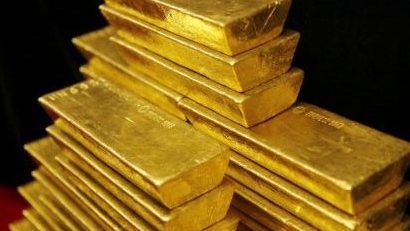Bank of Canada’s first interest rate hike in seven years early last month — while good for economic growth — is typically a dark omen for gold and gold miners. Though the lustrous yellow metal has performed well since the announcement, rising by almost 6%, the outlook is not as positive as many investors have been led to believe.
You see, escalating tensions in northeast Asia along with Trump’s increasingly volatile rhetoric caused investors to panic, sparking a flight of capital into gold because of its perceived status as the ultimate store of value. This latest rate hike, along with likelihood of further increases between now and the end of 2018, reduces the appeal of gold and precious metals stocks.
Now what?
Higher rates are indicative of a healthy economy, and this reduces the desire of investors to acquire gold and increases their appetite for growth assets, such as stocks that benefit from stronger economic growth. Higher rates also act to dampen inflation, making gold even less attractive, because it is generally perceived to be one of the best hedges against rising prices.
Firmer interest rates also increase the opportunity cost of holding non-income-producing assets like gold. As rates rise, the yield on income-producing assets, including bonds, grows, making them a more appealing investment, particularly considering that treasury bonds are considered one of the lowest-risk investments available.
Then it should be considered that higher U.S. interest rates are usually believed to be bad for gold because they lead to a stronger U.S. dollar. Gold, like most commodities, is priced in U.S. dollars, meaning that as the dollar’s value climbs, it becomes more expensive in other currencies, reducing its appeal to investors. There are signs that the Fed will raise rates at least one more time during 2017.
The conflation of these factors is not a good omen for gold miners. Their leverage to gold means that as gold declines in value, their stocks fall at a far greater rate.
An additional problem for gold miners is that higher interest rates cause the cost of capital to grow — a major complication because mining requires significant amounts of capital to locate and develop deposits to the point where the ore can be commercially exploited.
While large miners such as Barrick Gold Corp. and Goldcorp Inc. have put their balance sheets in order and possess mature mining operations across a diverse portfolio of producing assets, smaller miners are especially vulnerable.
The Brucejack mine in British Columbia, owned and operated by junior gold miner Pretium Resources Inc. (TSX:PVG)(NYSE:PVG), will cost US$811 million to complete and bring to full commercial production. Lundin Gold Inc.’s (TSX:LUG) Fruta del Norte project in Ecuador will cost US$684 million to be completed and become commercially operational. Those sums represent a big chunk of change for junior miners that are unable to depend on stable cash flows generated from mature fully operational mines.
It is not only debt financing that becomes more costly and difficult to acquire. Rising rates also make equity financing exceedingly difficult to obtain on a cost-effective basis. This is because as rates rise, the yield for lower-risk assets such as treasuries grows, leading to a higher risk-free rate. That means investors will demand a higher equity risk premium so as to accept the additional risks that come with investing in junior miners, making the considerable amounts of much-needed capital required to grow mining increasingly difficult to acquire.
So what?
In a macro environment where interest rates are rising, gold and gold mining stocks become less appealing investments. Not only does the value of gold usually weaken in such an environment, but the cost of debt and equity financing rises, making miners’ operations and any new projects less profitable.
 Stock Up Sale
Stock Up Sale






